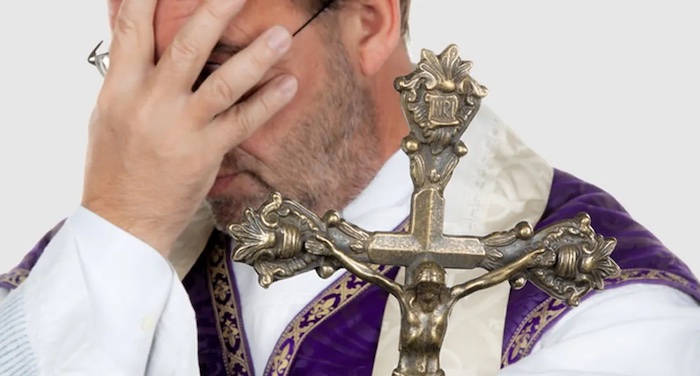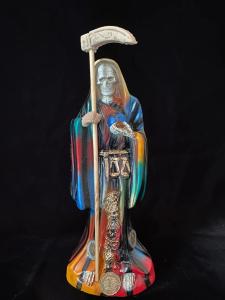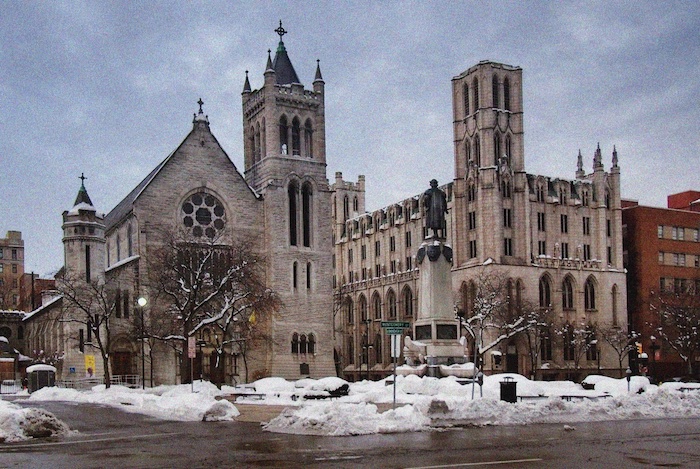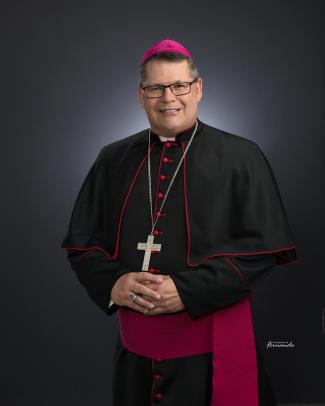— Pope Francis traveled to Lisbon, Portugal, for his fourth World Youth Day, to listen to the hopes, challenges and questions of over one million young Catholics from every corner of the global Church.

Pope Francis travelled to Lisbon, Portugal, for his fourth World Youth Day, to listen to the hopes, challenges and questions of over one million young Catholics from every corner of the global Church.
Pope Francis travelled to Lisbon, Portugal, for his fourth World Youth Day, to listen to the hopes, challenges and questions of over one million young Catholics from every corner of the global Church. He met with sexual abuse survivors, Ukrainian pilgrims, university students, young people suffering from illness; and he challenged them all to work for a “hope-filled future.”
A much smaller contingent of young people will have the Pope’s ear this October in Rome at the first of two month-long meetings of the Synod on Synodality, on the themes of Communion, Participation and Mission in 2023 and 2024. For the first time in history, lay people will have the right to vote in a synod, and among the voting members are college students and men and women in their 20s and 30s.
The Pope has said, “Synod means walking on the same road, walking together.” As we embark on this new path in the life of the Church, what are some guidelines to consider when thinking about listening to, and walking with, young people?
1. Youth do not share a common perspective
Young people are not a monolith. It can be unhelpful and reductive to speak about any group in the Church as a unified bloc. In a similar way, we should avoid speaking of “young people” as if they all share a common perspective on, or experience of, Church. There are young Catholics who are drawn to more traditional liturgies and those who feel at home in a Catholic Worker House, and some find deep meaning in both. There are young Catholics who feel hurt and alienated by the Church’s teaching on sexuality and others who see the Church’s countercultural witness as a bulwark in a destabilising, relativistic world.
There are hundreds of thousands more who have not set foot in a church since their baptism or confirmation. Outside the US Church, there are young people fighting in and fleeing from the war in Ukraine; young migrants risking their lives in the Mediterranean and on the Rio Grande; and others struggling in refugee camps across the Middle East and Africa.
When framed in this way, “listening to young people” can start to seem an impossible task. But this way of speaking may also shed some light on the sometimes opaque concept of synodality. If we are to truly listen to all these young voices, it will take more than a Vatican meeting or survey. It will require a new way of being Church, a Church that accompanies its people and is attuned to their hopes, doubts and lived experiences.
2. Offer something different
The Church must admit its failures and offer something different. The working document for the synod says that a synodal Church is one that “seeks to widen the scope of communion, but which must come to terms with the contradictions, limits and wounds of history.” Most young Catholics today have known only a Church marred by the sexual abuse scandal — but that does not mean they see it as ancient history. While the Church has made great strides in the protection of children and vulnerable adults, the revelations remain shocking for each new generation of Catholics as they mature. Church leaders must be forthright with young Catholics about past failures and transparent in their ongoing efforts to hold accountable those who covered up abuse. For young people to show up at the table, they have to trust they are speaking with adults who have their best interests at heart.
But the Church has failed young people in other, more subtle ways. It can be easy to blame secular culture, or even young people themselves, for the exodus of millennials and Gen Zers from the pews. And there is plenty to critique about modern society. But we should ask ourselves: Have we failed to offer something different? Studies show that Gen Z is the loneliest generation. If these young people are not finding community in parishes, have we been bold enough in searching for new models of relationship?
In a world marked by deep polarisation, have Catholics too often indulged in those divides instead of seeking to be agents of reconciliation?
Young people today are hungry for authentic communion, both with other people and with God, but they are sceptical of institutions and allergic to hypocrisy. To be credible in their eyes, Catholics should be honest about our shortcomings but unafraid to go against the grain of an increasingly flattened, materialistic world.
3. The Church cannot act like everybody else
Listening to young people does not mean idolising youth. In his book God Is Young, Pope Francis writes: “Adolescents seek confrontation, they ask questions, they challenge everything, they look for answers. I can’t stress enough how important it is to question everything.” But he has also said that the Church cannot think “she is young because she accepts everything the world offers her, thinking that she is renewed because she sets her message aside and acts like everybody else.”
There are many young people in the Church — and many more who have left — who want to see Church teaching, especially where it relates to women, LGBTQ people and divorced Catholics, better aligned with more modern values. Those voices will be represented at the synod and should be listened to, not for show but with an ear for where the Holy Spirit may be working through them. Serious discernment will be needed to find our way forward, and that will require the wisdom from within the Church that has spanned the ages, too.
4. Be willing to accept
Ask for more, not less, from young people. Among the delegates from the United States who will have the right to vote in October’s synod is Julia Oseka, a junior at St Joseph’s University in Philadelphia. When asked what emerged from her synodal conversations over the past two years, she said, “[T]he feeling that young people are not merely the future of the Church, but also the now of the Church.” While much discussion around the synod has rightly focused on Catholics with one foot in and one foot out of the Church, we should not neglect the millions of young people already active in the Church who are eager for their gifts to be more often accepted.
There are small steps we can take today, like making sure young people are invited to serve on parish councils — and that parish meetings accommodate the schedules of working adults and young parents — that could foster greater involvement among young people. But as the synod looks at more fundamental structural reforms to Church governance, participants should not overlook or underestimate the skills, energy and dedication young people are already prepared to offer the Church.
Young people will always be among us, and as Pope Francis said at his first World Youth Day in Rio de Janeiro in 2013, they are sometimes called to “make a mess.” The Church’s job is not to clean up after them but to harness their restless, creative energy in service of the kingdom.
Complete Article ↪HERE↩!






